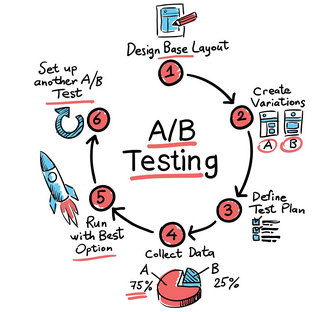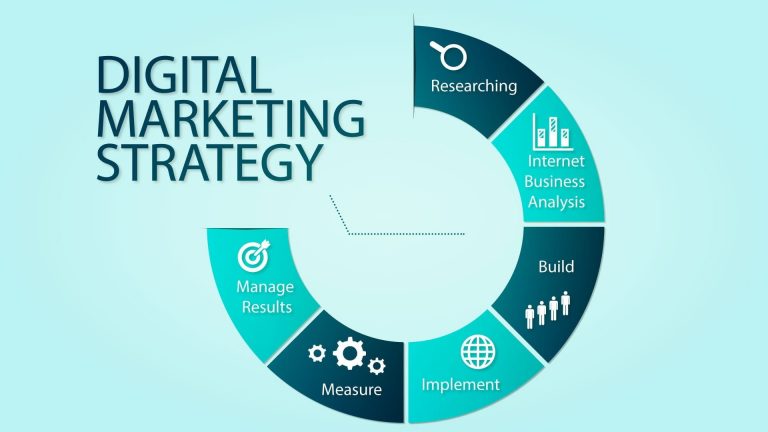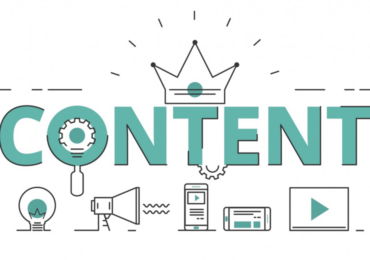8 Growth Marketing Strategies, Tactics and Tools That Will Propel Your Business Forward
The name of the game for growth marketing is experimentation. If you’re ready to test, test and test again, you’ll be in the right direction. This post will cover examples of data-driven growth marketing strategies and give you some tools to make the process easier. Using data to improve your marketing is the best way to grow your brand and have your customers line up to get your products and services.
The Data-Driven Goal
Data-driven marketing strategies require trial and error with the support of machine learning, data and information from multiple sources to drive targeted campaigns to end users. Content built with data in mind is more interesting and relatable for the customer.
Growth Marketing’s Purest Form
To market to your target audience, you’ll need to know two things. One, what problems, needs, and desires do customers have? Two, what are you delivering that they want to buy? Answering this means you need to collect vast amounts of data during the initial research phases of any marketing plan.
Data-driven growth marketers use multiple sources of customer data to optimize brand decisions and deliver on customer’s needs. Accurate and personal information means you’ll have more targeted and effective marketing campaigns.
Market research is crucial since marketing relies on identifying the targets audience deepest needs. Marketing teams often make assumptions about their target audiences or attempt to figure out their needs based on researching the market. They may use market studies, or survey their customers, then use a process of trial and error to guess what their customer may respond to.
The Data-Driven Approach
The data-driven approach puts your marketing on steroids. You can combine external machine-learning analysis tools built on top of your analytics data, in order to find out how to connect with customers at the right time, with a targeted offer.
For example, you can use custom data-drive chat bots that change behaviors based on whether a person is returning to the page, a first-time visitor, or a customer further along on the buyer cycle. You can also use data-driven retargeting to segment customers based on how much of your post videos they consumed or whether they engaged with your previous marketing.
Retargeting ads can find your website visitors on Facebook or Google, where you can serve custom ads to get them to return to your site. This type of data-driven marketing makes it possible to target users based on unique data metrics and deliver the perfect offer to them at the ideal time.
 There are many examples of positive data-driven approaches, including personalized customer experiences, tighter marketing segment targeting, and the ability to improve and test strategies with real time reporting. A single person or marketing team would find it hard to analyze vast amounts of data, however, the right strategies and tools make this process manageable.
There are many examples of positive data-driven approaches, including personalized customer experiences, tighter marketing segment targeting, and the ability to improve and test strategies with real time reporting. A single person or marketing team would find it hard to analyze vast amounts of data, however, the right strategies and tools make this process manageable.
Data-Driven Growth Marketing Strategies
1. Build Stronger Customer Connection & Experience
One strategy to take on is to build better customer experiences using the data you get. Use website traffic data, engagement rates, conversion rates and every other imaginable data source to improve customer experience at every level.
These data-driven decisions will help you create the messages and content that connect best to your customers.
2. Test Your Way To Success with Finding the Right Promotion Channel
Data can tell you the best promotion channel that is engaging your viewers and converting them into sales. The key is leveraging Google Analytics & Tag Manager as well as UTM parameters that will help with attribution and remarketing.
Find out which promotion channel produces better results at certain times over others and focus your marketing efforts on identifying the correct channel by measuring your conversions and engagement.
3. Combine Multiple Up-to-Date Data Sources
The best data-driven growth marketers will use fresh data and combine multiple sources. Your daily and weekly decisions should use the most recent data, so updating data is an important part of the process. To make this easier, you should create a marketing dashboard or use a marketing visualization tool like Adverity that connects all your data in one location.
4. A Data-Driven Team Culture
Data can support your business growth strategy and your marketing. Use customer data to improve your sales and support systems and connect company teams in order to allow the data to resonate throughout the entire company. If a data-driven decision has affected the marketing, then customer support and sales teams must be aware.
Data-Driven Growth Marketing Tools
#5: Real-time and Customer Experience
Speed is everything. Webpage speed impacts SEO. Speed-to-contact impacts the sales cycle. The longer it takes you to connect with a prospect, the lower your chances of closing the sale. Building data-pipelines that pass leads in real-time is critical to increasing close-rates.
#6: HubSpot Marketing Hub
From one central hub, you can create optimized content, launch custom segmented emails, monitor social media and run retargeting campaigns.
#7: Google Analytics & Tag Manager
The leader for website tracking and reporting, giving you a core data set to understand your customers. Track users’ behavior, demographics, session times, conversions, and connect to your Google Ads account to track and report results on your ads.
#8: BuzzSumo.com
Collect customer data by tracking your brand across multiple online sources. You can also track competitors and compare with your own content, and discover keywords, content types and trends to help you develop an effective content plan.
Intelligent Marketing Strategies Leveraging Data
With all this data, strategies, and tools, you have everything you need to begin experimentation. The data-driven approach allows you to make smarter marketing decisions and deliver content your customers are looking for. With the strategies and tools in place, you’ll be able to use data to grow your brand and engage with your audience, giving them what they are looking for, so they purchase your offers and become long-term customers.
Have a question about anything you read? Contact us today and we’ll be happy to answer it!



